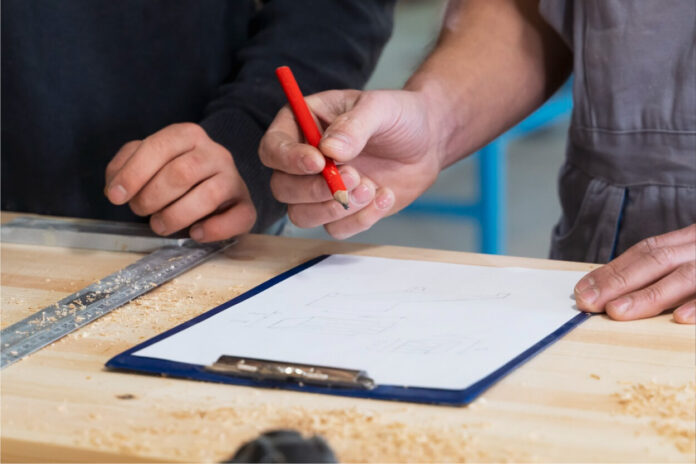Despite our increasingly high-tech world, hand-held tools remain the backbone of countless industries. From construction sites to manufacturing plants, these trusty companions connect skilled workers directly to their materials and tasks. The right hand tool isn’t just about getting a job done—it’s about getting it done right, safely, and efficiently.
Hand-held tools are those manually operated implements that don’t require batteries or power cords. They extend our capabilities, allowing us to cut, shape, tighten, loosen, measure, and manipulate materials with precision that machines often can’t match. What makes them special is the direct connection between the user and the work—providing instant feedback through your hands that helps you “feel” when something is just right.
Hand-Held Tools and Occupational Safety: Experts Teach You to Avoid Common Work Injuries
Workplace injuries often result from improper tool selection or usage. Ergonomic tool designs, particularly screwdriver handles that maintain natural wrist positions, prevent carpal tunnel syndrome and career-ending repetitive stress injuries.
Healthcare professionals emphasize that tools shape our bodies over time. Selecting handles that keep wrists straight—with hands aligned with forearms—prevents cumulative damage.
Regular tool maintenance is essential for safety. Dull cutting tools create hazards by requiring excessive force. Weekly inspections should check for loose components, damaged handles, and worn surfaces.
Organized storage significantly impacts workplace safety. Scattered tools waste time, lead to incorrect tool selection, and create tripping hazards. Shadow boards with outlined storage locations improve efficiency and safety.
When purchasing tools, consider the complete cost equation. While initially more expensive, quality tools with superior durability, ergonomics, and safety features prove more economical through reduced injuries and increased productivity.
Precision and Efficiency: How Professional Hand-Held Tools Enhance Work Outcome Quality
A professional has been crafting custom furniture for over thirty years. “For some tasks, nothing beats a quality hand tool,” he explains while creating perfectly smooth curls of wood with a well-maintained hand plane. “This gives me feedback through my fingers that even the best power tools can’t match.” He demonstrates how slight adjustments in angle and pressure produce dramatically different results. “See how the grain catches the light now? That’s the difference between good work and exceptional work. And clients absolutely notice, even if they can’t explain why.”
In auto restoration, precision tools protect irreplaceable components. “When I’m working on a classic car worth six figures, I can’t risk damaging rare parts,” explains a master technician. “Hand tools let me feel exactly how much pressure I’m applying. There’s no substitute for that tactile feedback with delicate components.”
For electricians, precision tools translate directly to reliability. “When making connections that need to carry current safely for decades, I need my crimping tool to apply exactly the right pressure.” She demonstrates with a ratcheting crimper that releases only when it reaches the correct compression. “This eliminates guesswork and inconsistency.”
Quality tools also improve efficiency in surprising ways. “I used to think speed meant using power tools for everything,” admits plumbers. “But reaching for the right hand tool often saves time overall.” He points to a specialized basin wrench designed for accessing tight spaces under sinks. “This lets me complete a faucet installation without removing the sink or disassembling the cabinet.”
The psychological impact of quality tools affects outcomes too. “When you give someone professional-grade tools, there’s a pride that translates directly to their work,” notes manufacturing trainer Susan Park. “Workers with better tools take more care with details and produce better results.”
Industry-Specific Hand-Held Tools Applications: Professional Choices from Construction to Precision Manufacturing
Insulated pliers in electrical work withstand 1,000 volts, preventing accidents. Hand tools excel in confined spaces where precision outweighs speed.
HVAC technicians use specialty tools like offset refrigerant wrenches to access connections in tight spaces without disassembling equipment.
Manufacturing precision requires superior measuring tools calibrated to certified standards when working with thousandths-of-inch tolerances.
Healthcare maintenance relies on torque screwdrivers to ensure exact fastener tightness on life-critical medical equipment.
Quality tools prove cost-effective through extended lifespan and reliable performance. Premium tools typically pay for themselves despite higher initial costs.
Our professional tool series offers engineered solutions for industry-specific challenges across construction, manufacturing, and maintenance applications.
-> Go Browse Our Product Catalog
Others Also Interested
- What are the most easily overlooked safety hazards when using hand-held tools?
Professionals consistently mention three overlooked hazards: using tools for purposes they weren’t designed for, neglected maintenance leading to unpredictable performance, and improper storage causing damage or creating tripping hazards. Safety experts recommend establishing clear guidelines, implementing regular inspections, and investing in proper storage systems.- How do professionals in different industries build their respective hand-held tool sets?
Most skilled professionals start with quality basics and gradually add specialized tools as specific needs arise. Many follow the “buy once, cry once” philosophy—investing in professional-grade tools from the beginning rather than repeatedly replacing lower-quality alternatives. Industry-specific requirements often guide tool selection, particularly in specialized fields.- What special hand-held tool characteristics are needed for precision work?
Precision work demands tools with excellent material quality, tight manufacturing tolerances, and thoughtful design. Professionals look for tools with minimal play in moving parts, consistent performance, and comfort features that reduce hand fatigue during detailed operations. For measurement tools, accuracy, stability, and readability in various lighting conditions are essential.- How to avoid occupational diseases from long-term use of hand-held tools?
Prevention focuses on three strategies: choosing ergonomically designed tools that keep hands and wrists in natural positions, using proper technique that distributes work across larger muscle groups when possible, and varying tasks throughout the day. Experts also recommend regular stretching exercises specifically for hands and forearms.- What hand-held tool usage techniques can significantly improve work efficiency?
Experienced professionals emphasize proper tool maintenance, correct body positioning, and understanding how each tool was designed to be used. Many describe finding the “sweet spot” where a tool requires minimal effort to achieve maximum effect. Organizing tools for easy access and developing consistent work routines eliminates wasted motion throughout the day.
-> Go Browse Our Product Catalog



